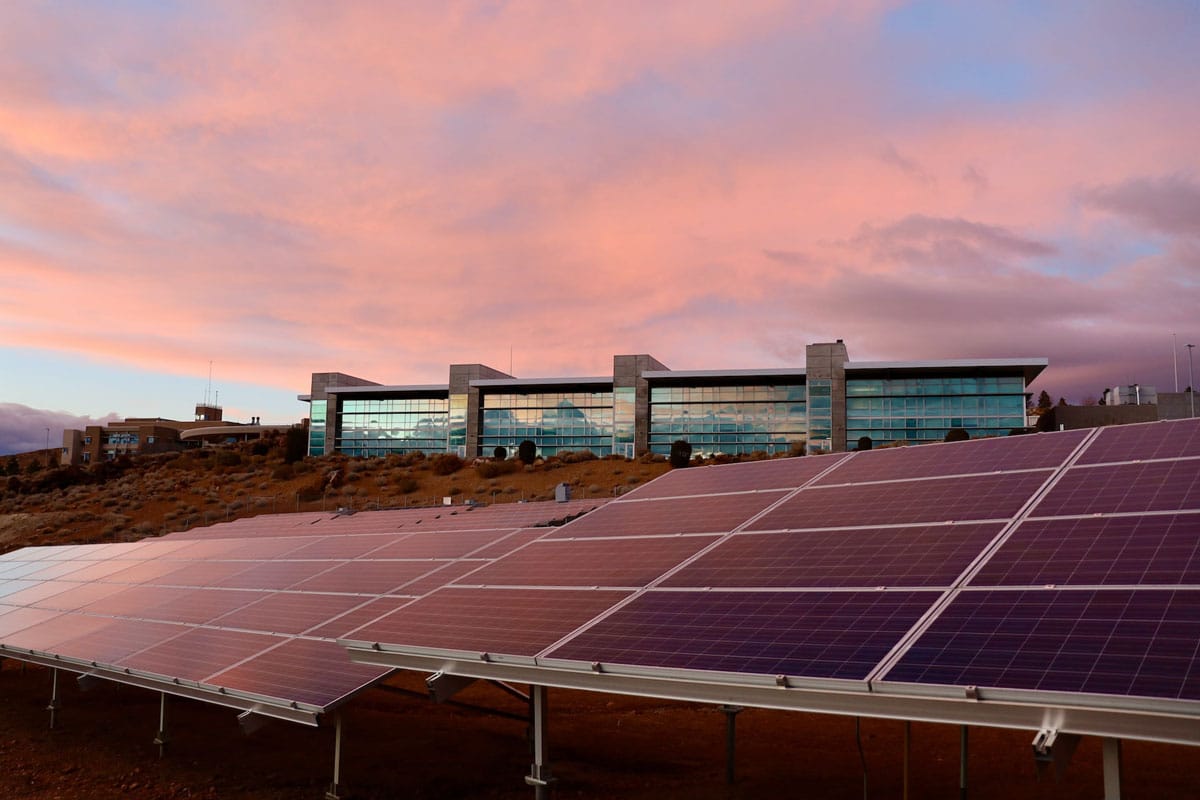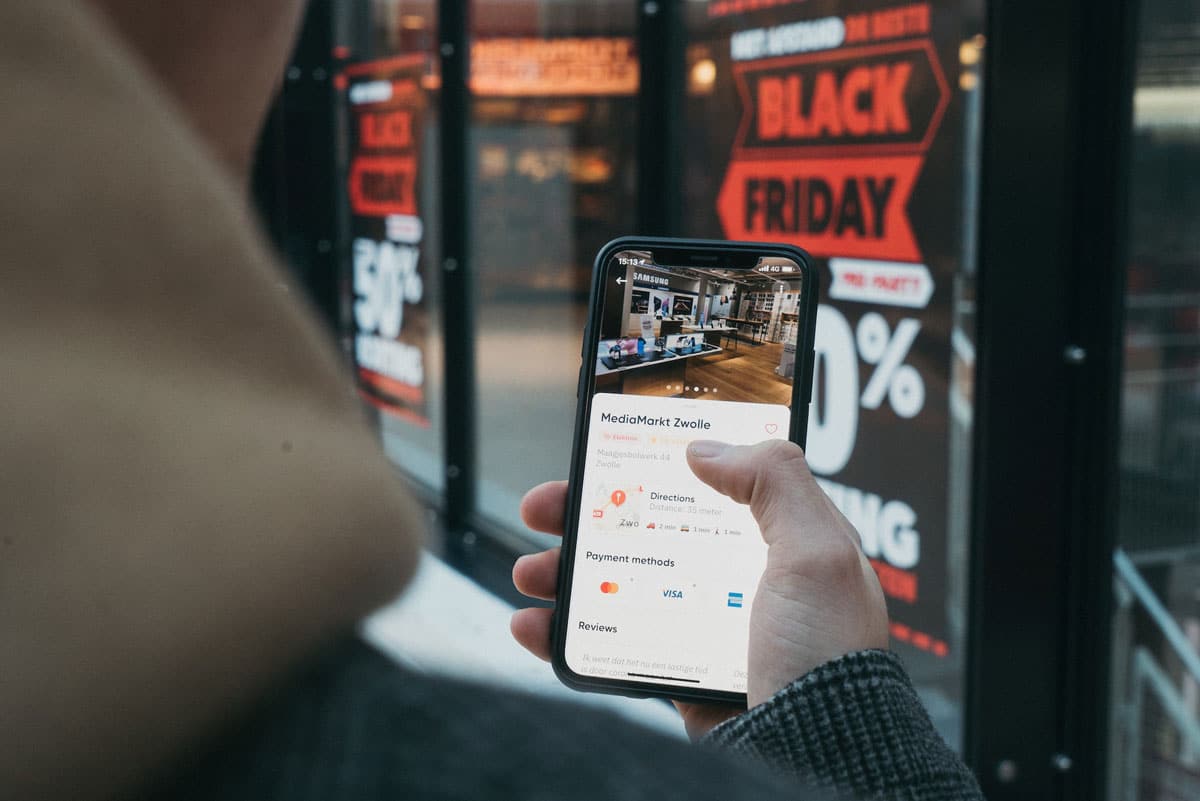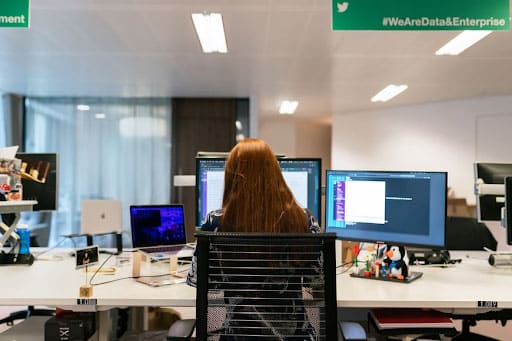

With the increase in carbon emissions from conventional energy sources, net-zero construction methods such as solar and renewable energy have become imperative to commercial building and residential home functions. Several US states have initiated mandates requiring large corporations and federal buildings to implement energy management practices to offset emissions.
So, what are the benefits of net-zero construction, what should you consider before adopting sustainable practices, and how can you deploy solar systems to reduce carbon emissions?
One of the main concerns surrounding net-zero construction and solar adoption is managing the accompanying expenses. Solar panels and other net-zero construction methods require a higher initial investment than building a home or business with traditional energy sources. Yet, when evaluating the levelized cost of energy (LCOE) associated with a traditional electricity generator powering a home or business, net-zero construction reduces utilities significantly, ultimately yielding a greater ROI.
Additionally, net-zero construction has a lower risk profile which reduces the insurance and operating costs of solar and renewable energy. When considering each cost factor, net-zero construction is a profitable investment with long-term benefits.
Rising state mandates on energy efficiency and sustainability bring about tax incentives to adopt solar and renewable energy practices into your home or business. The Solar ITC (solar income tax credit) decreases the cost of installation by 30% for residential rooftop solar systems. Comparably, adopting renewable energy sources for your business allows you to obtain energy credits when one megawatt-hour (MWh) is produced and delivered to the electricity grid, generating recurring ROI.
Solar storage can also be implemented to reduce data centers’ cost of electricity and energy consumption levels. According to Dan Javan, President and CEO of Suntuity, electricity usage and energy demand generation comprise 100% of a business’ data center expenses. Solar storage is ITC eligible and, when utilized, minimizes demand costs by 80% while additionally reducing your electricity bill by 30-35%. When leveraged correctly, these tax credits and incentives create a profit center for your business.
When assessing net-zero construction options for your company or residence, it’s crucial to make a decision based on energy consumption and carbon emission levels. Dan Javan states, “whatever construction methodology you use, the goal is…to reduce your energy footprint to a point where you’re actually producing more than you’re consuming.” To achieve this goal, one option is to assemble buildings using concrete or lumber that incorporates green technology and renewable energy sources. This allows you to supply additional power to the grid, aligning energy consumption with production and eliminating carbon emissions.
By incorporating solar and renewable energy practices into your net-zero construction efforts, manufacturing becomes more sustainable.

The rise in omnichannel marketing strategies has generated a new shopping paradigm where consumers have unlimited access to products and drive brand profitability based on their purchasing decisions. With customers impacting brand value and success, it’s crucial to develop business models that connect directly to the customer and shape their purchasing decisions and experiences.
One way to accomplish this is through consumer sentiment and VoC (voice of the customer) — two interrelated concepts indicating customers’ shopping habits, preferences, expectations, and feedback and experiences with your brand.
So, how can you leverage these areas to drive sales, maximize ROI, and regain control over your brand?
Before implementing customer-centric practices into your business model, you must evaluate and measure consumer sentiment and VoC. This requires aggregating data points to maximize precision and generate measurable results. But, with many data collection methods and sources and multiple factors influencing these metrics, it’s often challenging to focus on a specific strategy.
According to Gautam Kanumuru, Co-founder and CEO of Yogi, and Haithem Elembaby, Yogi’s Head of Sales, data collection depends largely on factors such as a brand’s size, sector, and selling model. For instance, social media is a viable method for CPG brands to capitalize on consumer and industry trends. Similarly, focus groups and surveys allow brands to raise awareness and obtain feedback on new product launches, much like reviews and ratings provide DTC brands with valuable insights into shopper experiences and expectations.
As Haithem says, by having “the right technology that allows you to get a granular view [of the data], you can expose a lot of hidden issues, opportunities, and trends that can help with decision-making across the organization.” Experimenting with various data analytics and collection methods allows you to determine the best path forward for product positioning, messaging, and innovation.
Creating a business approach that is both shopper-centric and profitable entails assessing behavioral trends related to consumer sentiment and VoC. One prevalent trend brands should consider is price and value sentiment. With inflation and price increases, consumers want more value for their dollar, and products that meet their specific demands have a higher sales rate.
Another key consumer purchasing trend is the effect of negative feedback on brand performance. According to Gautam, “reviews and ratings are read by anywhere between 80 and 90% of shoppers before they make a purchase.” This means that even a few negative reviews can impact conversion rates and sales.
Staying on top of trends allows you to regulate your brand’s performance and determine its success.
Once you’ve established the exact data points influencing customers’ purchasing decisions, you can hone your products to meet their demands. Shoppers have access to a myriad of product information regarding pricing, availability, usage, and ratings, making them selective of the products they decide to purchase.
When considering the scope of customer knowledge, not every product or brand is the right fit for each person. So, it’s essential to utilize your data points to identify your ideal customers and customize your product messaging to solve personal use cases and create favorable purchase and post-purchase experiences that meet their expectations and preferences.
By leveraging these fundamental customer personalization strategies and assessing trends and data points, you can optimize conversion rates and generate sales and ROI.

In a recent BWG Strategy survey, feedback was acquired from 77 US banking professionals across a spectrum of bank sizes and locations. They answered questions on the frequency of branch visits, the frequency of digital use, and their predictions for the next couple of years.
Not surprisingly, the survey showed that the overall number of in-person branch visits is going down, and the frequency of digital use is going up. However, the survey revealed some shocking new insights.
Retail banking experts Alex Jimenez and Christopher Young are breaking down the data, discussing the latest trends, and helping you invest in the path toward greater banking success.
There are a few key themes banks are looking at right now. This includes seamless payments and API-driven experiences (also known as banking as a service), future-proofing infrastructures, and integrating business models offered by organizations outside of banking.
On top of this, banks are digging into technology. They’re analyzing cloud capabilities, moving beyond data lakes, and considering the impact of AI and other technologies. They’re also focused on regulation and security measures.
Two of the biggest upcoming trends in retail banking are personalization and data-driven banking. Consumers are receiving personalization in other areas of their life, and they expect the same from their banking tools. They’re looking for specific information or a product or service that’s unique to their needs.
As customers ask for increased personalization and ease of use, banks are moving toward the most convenient set of tools. Oftentimes, this means digital tools. But what about the customer who isn’t tech-savvy?
Alex reminds us that personalization is all about the customer, and it doesn’t necessarily have to be digital-based. Alex explains, “Whatever you do in one area should be applicable elsewhere. So when we talk about personalization and giving advice to customers, it should not just be we are only going to do that on the mobile app, or we're only going to do that online. At a branch, that kind of personalization bubbles up because the branch employee gets the information to relay that advice to a customer in person or call center person as well. So you’ve got to be thinking holistically about all the channels and how customers deal with them.”
It’s not about in-person or digital — all of your services have to work cohesively and cater to the customer journey.
To ensure that you’re improving the consumer journey, it’s important to communicate effectively, keep the consumer top-of-mind, and gather data to make informed decisions.
As Christopher says, “You cannot optimize or fix what you can't measure.” Investing in technology can help build data stacks, analyze and measure data, and, ultimately, enhance the user experience. “For us,” Christopher explains, “we're looking to aggregate data from different sources for activation purposes — unification and activation. How can we have a common understanding of the individual across that journey and then ultimately be able to activate that data in real-time?”
Technology advancements may be the answer. This can be a major cost, but investing in technology can help you build a better funnel (both digitally and in physical branches) to get more people through the pipeline and acquire more clients. If you’re not investing in technology, you’re losing clients who are frustrated with an inadequate personalized journey. Technology, data, and the customer journey are all connected, and when you put effort into these areas, you’ll see significant success.

Environmental, social, and governance (ESG) compliance is an emerging topic across industries. But with new standards that often vary between regions, it can be challenging to prioritize your company’s initiatives and ensure that you’re complying with regulations.
Fortunately, the Sustainable Enterprise Tech Council brought in the experts to share insights on all things ESG compliance, from rules and regulations to best practices for companies of any size.
Most companies — especially smaller ones — don’t have the capacity or funds to shape their own sustainability group. On top of that, ESG is a broad area that encompasses many different aspects of its three pillars. So, how can you prioritize ESG initiatives when you have limited resources?
According to Marcia Narine Weldon, “It really is a matter of risk. Dealing with trade groups, industry groups, [and] others can keep you educated because you have to have pretty much a spreadsheet to figure out what's going to apply to you. But you have to take a risk-based approach.”
Because your ESG prioritizations will be specific to your company, you have to dig into the details of your operations. Look at your supply chain and devote time to your tier two and tier three suppliers. Additionally, you should look at where you’re operating. Are you operating in the EU? Are you a US company operating in the EU? Different regions have distinct regulations, and it’s crucial that you are aware of those specific to your company. Most importantly, you must figure out where your data is and how you get it. Almost all regulations are focused on disclosure, and if you can’t reach your data, you won’t be able to report it accurately.
As the climate change crisis heightens and people become more aware of environmental sustainability impacts, many companies are working to reach net zero emissions. Along with this, new standards of compliance are being set in place.
A decade ago, companies had to submit data on different areas like packaging and waste electronics, but today, much more information is required. The shift came around 2015 with the introduction of the EU Circular Economy package, which then spread globally. But the real shift was around 2018 when there was a major focus on plastics, plastic waste, and how we recycle. Today, companies have to report more data and become more transparent regarding their recycling, emissions, and waste operations.
“When we are audited,” Emma Mundy explains, “the sheer volume of information and data that is required of us is — all these new requirements are coming in, and they're only getting more onerous.” As a sustainability professional who has seen the changes over the last decade, Emma goes on to say, “We have to set KPIs in some countries on reducing our consumption and showing how much we're recycling certain products and packaging. And we have to track the data on those things.”
As ESG regulations and standards progress, companies often wonder: how strict is the enforcement?
Regulation and enforcement vary by country, but typically, the enforcement isn’t used as a scare tactic — it’s put in place to help you comply. Authorities see the bigger picture and want companies and the rest of the world to progress toward a more sustainable future.
Typically, enforcement comes in the form of fines for non-compliance or reporting inaccurate data. Brendan Walsh says that “in Europe, [the fines] can be quite significant for their own privacy-related breaches. In certain instances, you can be looking at fines up to 10% of global revenue. So for Google, Microsoft, [and] Apple, that is enormous. They take them very seriously. The other aspect, clearly, is the reputational risk that goes along with it.”
The consequences of ESG non-compliance often depend on your region and the size of your company, but overall, it’s essential to abide by the regulations. That way, your company not only upholds its reputation and avoids fines but also works toward a better future.

With the expansion of automated technology, digital transformation is essential for acclimating to various changes in the digital space, including evolving consumer interests and operational strategies.
Yet, digital maturity — the process of responding to these developments — involves applying organizational changes to a business’ infrastructure.
Many companies lack the fundamental framework required to modernize operations. As a result, 80% of businesses fail in their digital transformation efforts, according to Holden Bale, GVP and Head of Commerce at Huge.
So, how can you streamline digital transformation to enhance your organization and stay on top of trends?
When developing a digital transformation strategy, it’s important to view it as an ongoing process. As Jarid Lukin, the Global Senior Director at Mars, says, “there’s always another phase, another project; you have to keep iterating and evolving.” Once you acknowledge this factor, you can begin to structure your business for the future.
The 4Ps framework involves assessing your company’s digital capabilities in terms of people, processes, platforms, and performance. Holden Bale notes that businesses must take the initiative “to own, operationalize, and evolve [their] digital capabilities.”
To execute this model in its entirety, organizations should form strategic partnerships with experts who can implement forward-thinking processes to optimize performance. It’s also crucial to adopt innovative platforms suitable for your functional strategies and customer needs.
By taking an integrated approach to digital transformation, you can develop a course of action that aligns with your business goals.
One of the core components of digital transformation is the integration of new technologies and platforms. But, with these new programs come significant investments, so allocating and prioritizing your resources is paramount.
How can you determine the most profitable technological investments to strengthen value in your company?
Jarid Lukin advises incorporating short-term and long-term financial strategies into your business plan. A short-term strategy includes considering digital investments in terms of your value proposition. Evaluating potential benefits such as first-party data or consumer insights drives ROI. In the long run, upgrading platforms to serve your customers better and secure your resources may be beneficial.
The final stage of digital maturity is determining which aspect of your business to reconstruct. The three most common forms of digital transformation are omnichannel abilities, digital finance, and business model optimization.
With an omnichannel approach, you can utilize digital automation to expedite product deliveries and manage your inventory effectively. Digital financial transformation entails converting website traffic into new leads to maximize top-line growth. Enhancing your business model requires shifting from manual to digital processes. Russ Barnes, General Manager of Digital Business at BSN SPORTS, maintains that the “digital world has a lot more customer touchpoints than the one-to-one relationship you might have in the analog world.” Hence, it’s critical to understand how to expand your reach.
You can construct the best path forward by approaching digital transformation with practical and progressive strategies.

Data centers provide solutions for organizations to store, process, and disseminate their IT operations and equipment. But, according to Brendan Walsh of World Wide Technology (WWT), the carbon “emissions from data centers are now very close to those from the airline industry,” making them the fifth largest electricity consumer worldwide. From a business standpoint, David Locke, EMEA Chief Technology Advisor at WWT, says that data centers comprise 20-25%, sometimes up to 40%, of a company’s total energy consumption.
So, what are some strategies you can establish to reduce your carbon footprint and reach net zero emissions?
Companies are often unaware of how much energy their data centers use. In today’s fast-paced business environments, day-to-day practices exacerbate consumption and emissions. It’s common for organizations to run multiple servers at a time, leave them running after hours, and overlook idle appliances.
How can you offset your operations to advance toward a carbon-neutral data center?
As a start, companies can analyze their datasets to determine how they’re expending energy. With a data analytics strategy, you can evaluate your servers for energy efficiency and power usage. This method also allows you to identify the location of your workloads and the use cases for each one to regulate carbon emissions. By taking a pragmatic approach to sustainability and disseminating your business functions, you can make informed decisions to develop efficient practices.
One seemingly apparent practice would be to use renewable energy sources to balance consumption and carbon emissions. Yet, these sources make up only 20% of electricity generation in the US and, as a result, are not sufficient enough to sustain power for each function in an organization.
Instead, businesses should optimize their software to minimize excessive usage. David asserts that “the average utilization of a server inside an enterprise organization is around 30-40%.” Transferring your workload to the cloud allows you to manage your overhead and increase energy efficiency by 85-90% in your overall business environment.
Alternatively, companies can employ other procedures to consolidate, update, and modernize their technologies to reduce electricity.
VMware provides a viable option for organizations to consolidate their workloads and maximize data center efficiencies. This technology implements virtualization services to operate multiple workloads simultaneously. Additionally, it provides the opportunity to monitor each user’s energy consumption, so businesses can actively measure power and usage.
By applying VMware to your environment, you can develop practical goals to reduce consumption and emissions and attain net zero.
 Headless commerce is not a fad. In fact, it’s becoming the new normal. But how can you tell if headless is right for your company?
Headless commerce is not a fad. In fact, it’s becoming the new normal. But how can you tell if headless is right for your company?
For many B2B and B2C companies, headless commerce is the future. However, before you go headless, there are a few things you should know.
Michael Harvey of Corra says, “Headless is not a religion — it’s a spectrum.” Ultimately, headless means that your website’s back end is separated from the front end. But there are different stages to headless commerce.
First, there’s the decoupling stage. In this stage, you can detach the front and back ends and have the marketing and business working on the front end without constraint from the slow pace of the back end.
The next step in the journey is making the head agnostic. The head can communicate programmatically with the back end but doesn’t actually rely on what’s there.
Companies today are often at this stage: they’re thinking of the back end as a set of composable services. These companies are looking at the various functions the back end provides — such as checkout, product account, and product information — and thinking of them as discrete services to be consumed by the front end.
Earlier this year, the clothing and beachwear brand, Salt Life, launched its PWA (Progressive Web App). This PWA means that the company’s application is able to take more progressive advantage of the browser it’s running on and can obtain app-like behaviors, such as working offline.
But why did Salt Life take a PWA headless commerce approach?
According to Salt Life’s Vice President of eCommerce, Larry Laska, using a PWA on the front end can tremendously improve site speed, which was an issue for their website. Larry realized that “all of these back end pieces that are loading inventory and loading proxies and loading all of this data…that's really where the memory load sits. If we just disconnect the back end piece from the front end, [then] the front end can focus on all the pretty, fun pieces that people see.”
After implementing the PWA into Salt Life’s headless commerce approach, they got their site speed down to under two seconds on every type of device.
There are many advantages of headless commerce. Headless creates an opportunity to optimize a team around the front-end experience without all the historical constraints, allowing your sites to operate faster with more flexibility and autonomy.
However, headless commerce has its complexities. If you’ve decoupled or detached the head, you’re able to scale, but you still have many things happening in the back end that have to be orchestrated. Once you decouple the back and front end, you’re dealing with two tech stacks, and you’re often dealing with two disparate technical abilities.
So what can you do to deal with the complexities?
Adobe’s Head of Commerce Solutions Consulting, David Augustine, has some advice. He says, “It's really important that you work with [a partner] that really has put in the time. At Adobe, we have a reference architecture for PWA. We have a starting point, and you can take it and be up and running very quickly. But to build a really good, customized, industry-specific website — like what Salt Life has — you really do need to be focused on a really strong partner.”

Cloud computing services are a viable option for businesses to compile and streamline their resources. Yet, transitioning to the cloud requires careful consideration of factors such as budget, sustainability, and efficiency. Many companies struggle to comprehend these implications fully and, as a result, overspend when relocating their processes to the cloud.
So, what are some strategies you can employ to leverage and enhance cloud capabilities for your business?

Before transferring your workloads to the cloud, it’s crucial to think critically about configuring your infrastructure for your business goals so you can capitalize on the software’s full potential.
To accomplish this, you must first determine which aspects of your business will benefit from the cloud. Next, invest time in understanding your designated cloud environment so you can establish the best method for streamlining your business processes. Jenny Haladik, Cloud Expense Management Practice Lead at World Wide Technology, advises companies to view the cloud as a business tool to ensure their infrastructures can develop and scale along with their businesses.
Another aspect to keep in mind when optimizing your environment is cloud usage. By placing limits on your servers and managing resource consumption, you can maximize efficiency. As Jenny says, you don’t want to be running your applications after hours.

One high-priority concern surrounding cloud usage is cost. To mitigate expenditures, devise a chargeback or showback model to allocate costs to each department for their usage. These methods help you organize your finances so you can determine the source of your expenses and make the appropriate adjustments to promote operational effectiveness and cost-efficiency. Through these measures, Brendan Walsh affirms that businesses will be able “to reduce expenses by 25 to 30%.”
By taking the necessary steps to ensure proper cloud utilization, you can keep your business functioning smoothly.
Assembling company information into a cloud environment will reduce carbon emissions as businesses expend less power and energy and utilize fewer servers. However, corporations must employ the appropriate measures to enhance sustainability.
When shifting to the cloud, it’s vital to assess your industry’s standards for sustainability. For instance, many technology industries require companies to comply with Environmental, Social, and Governance (ESG) criteria. With these regulations, businesses must maintain transparency regarding sustainable practices.
How can you develop such procedures to comply with industry specifications?
Invest in renewable energy credits to acquire natural energy sources for carbon-neutral data centers. Traditional data centers use continuous power supplies and necessitate complex cooling systems, consequently increasing business expenses. These credits reduce your carbon footprint, minimize electricity, and decrease costs.

Additionally, when choosing a cloud service provider (CSP), it’s helpful to examine the initiatives each provider is taking to drive sustainability. According to Jenny, “Microsoft is looking at how they can build out data centers…on ocean floors” to limit the release of energy from heating and cooling systems. Yet, the corporation still consumes some degree of fossil fuels. Similarly, Google is ranked as one of the highest in sustainability measures through its use of renewable energy sources. Still, experts claim the platform continues to invest in the oil and gas industries.
That’s why it’s essential to prioritize your sustainability practices and align each provider’s approach with industry guidelines to make informed decisions.

Over 40% of a data center’s energy is spent on cooling. That’s why BWG’s Sustainable Enterprise Technology Council is on a mission alongside World Wide Technology to target cooling practices in the tech space.
So what are the most sustainable and cost-efficient cooling technologies? Should your enterprise change its cooling methods?

One common cooling method is immersion cooling. This is where you take all of the fans out of the computer and put them into a tank of nonconductive fluid — what Don Molaro describes as “essentially baby oil” and other chemicals. This method is improving over time, but there are still some drawbacks.
Another method is direct-to-chip liquid cooling. In this practice, you replace the heat sinks on various components of the system, typically the CPUs, GPUs, and other auxiliary units that produce a lot of the heat. Then, you use a fluid to draw the heat out directly from those components. From there, you radiate the heat out to other parts of the data center.
How does air cooling compare to liquid cooling?
As CPUs and GPUs become more power-intensive, air cooling is going to become less efficient. Don explains, “it's going to be hard to blow that amount of air efficiently — or at all — to cool those components.” So, as technology advances, companies may want to shift gears toward liquid cooling instead.
Don also notes that there’s a lot of research to be done in this space yet, but many innovative companies are now taking a hybrid immersion cooling approach, where they’re only using a tank suitable for a single system. And as more companies employ high-density computing, many are turning toward liquid cooling methods upon realizing that fans are no longer efficient.

The future of cooling and sustainability really comes down to companies optimizing their systems and understanding how much their infrastructure costs.
To aid enterprises in their sustainability journey, World Wide Technology is offering consulting spanning three practice areas: sustainable technology, ESG consulting, and ESG data and AI. Brendan Walsh says that these practice areas, “[were] launched following quite a considerable amount of research and strategy development, looking at customer needs, what was out there, [and] looking at [World Wide Technology’s] assets.”
Because cooling and sustainability are such significant targets and opportunities, the team at World Wide Technology is building out unique resources and labs to help each enterprise reach a net-zero target.

As companies look to optimize their approach in a digital-first world, many have shifted over to the cloud. Because of the cloud, they can access critical data, increase collaboration and efficiency, and improve their digital infrastructure. However, the many benefits of the cloud come with a fair share of challenges, particularly in the security realm. What tools can your company use to ensure data security in the cloud?

Security threats are much more advanced than they used to be. That’s why many third-party services, like Orca Security, have stepped in to provide cutting-edge solutions. At Orca Security, they protect against vulnerability, misconfigurations, malware, lateral movement risk, and more.
Using a multi-cloud approach, Orca provides instant on-coverage for AWS, Azure, and GCP. It may seem like many moving parts, but the team at Orca guides organizations every step of the way, making sure their plan is mapped out until launch.
Plus, the timeframe to implement these solutions is quicker than you might expect. It takes about half an hour to implement for a single account, less than an hour for multiple accounts. Although large businesses can get more complex, Orca can help you get set up in days and ensure everything is in place before the solution is set in motion.
There are many benefits of a third-party platform like Orca Security. But is a third-party platform worth the extra cost, or should you utilize cloud-native tools?
We’re seeing mixed opinions on whether cloud-native tools provide adequate security. Some companies believe that third-party tools are just regurgitating the results of cloud-native solutions, however, others see major gaps in cloud-native tools. Much of the existing on-premise software falls behind in the cloud security realm, and many companies are finding that third-party services have a more detailed, comprehensive approach.
You don't want to risk data security by opting for the cheapest solution. Ultimately, your company will be most secure when balancing cloud-native tools with an overlay service like Orca Security.

Overall, the cloud has a better system for the future than on-premise solutions. Although it’s difficult to measure improved security posture, Orca Security’s clients have found that risk prioritization has saved a considerable amount of time. Orca’s context-aware engine prioritizes the 1% of alerts that truly matter and need attention. On top of that, Orca’s solutions allow companies to have more visibility, which is vital to secure data.
Compared to on-premise solutions, the cloud has greater visibility, an essential security component. In fact, Orca Security prides itself on 100% data visibility. But why is visibility vital to secure cloud operations?
Greater visibility allows you to spot errors before they turn into full-scale data leaks. It also allows you to keep your environments, employees, and data as secure as possible. To gain visibility, many third-party solutions are turning toward agentless technology, eliminating coverage gaps and giving you a complete overview of your cloud data.